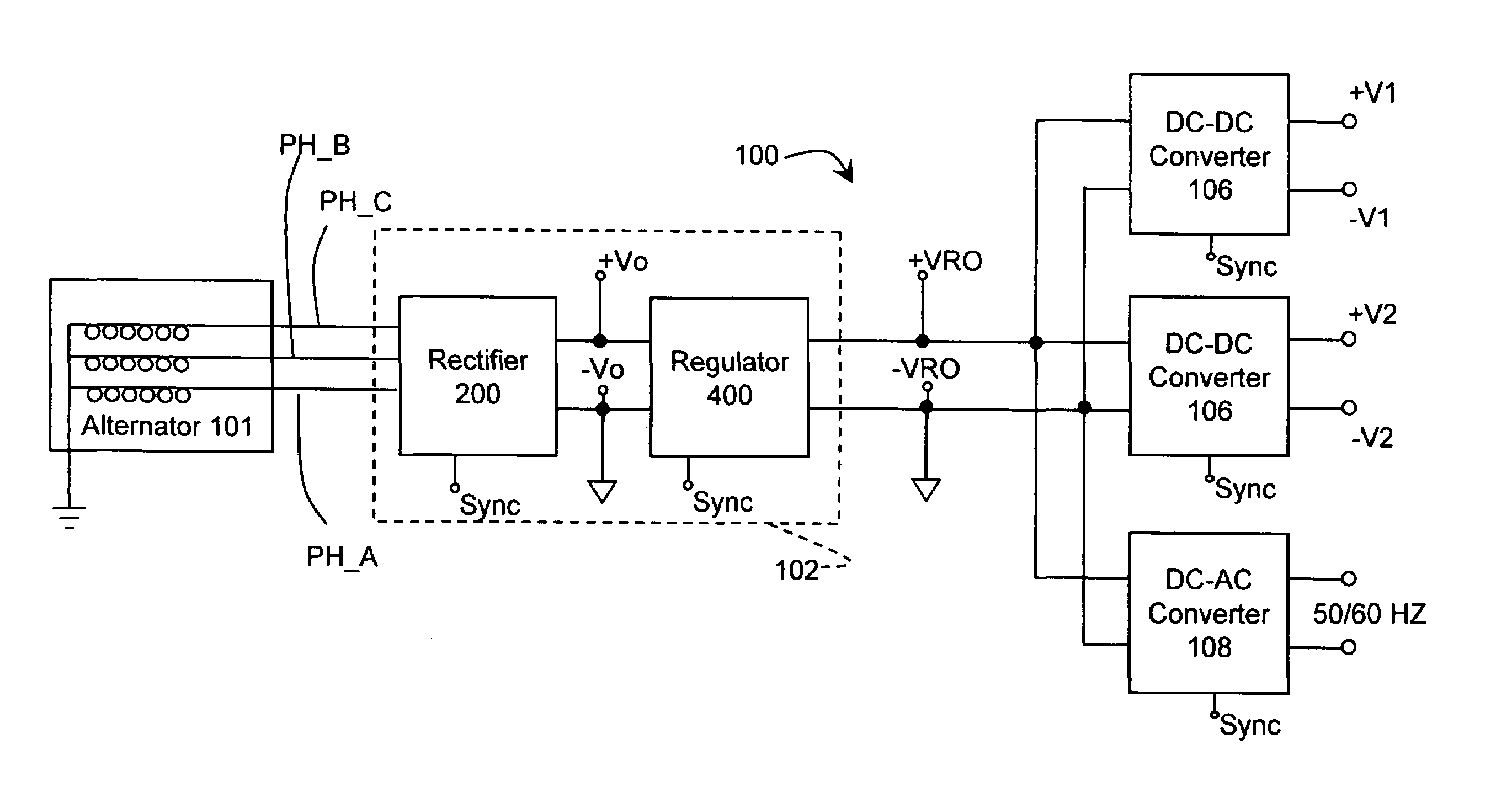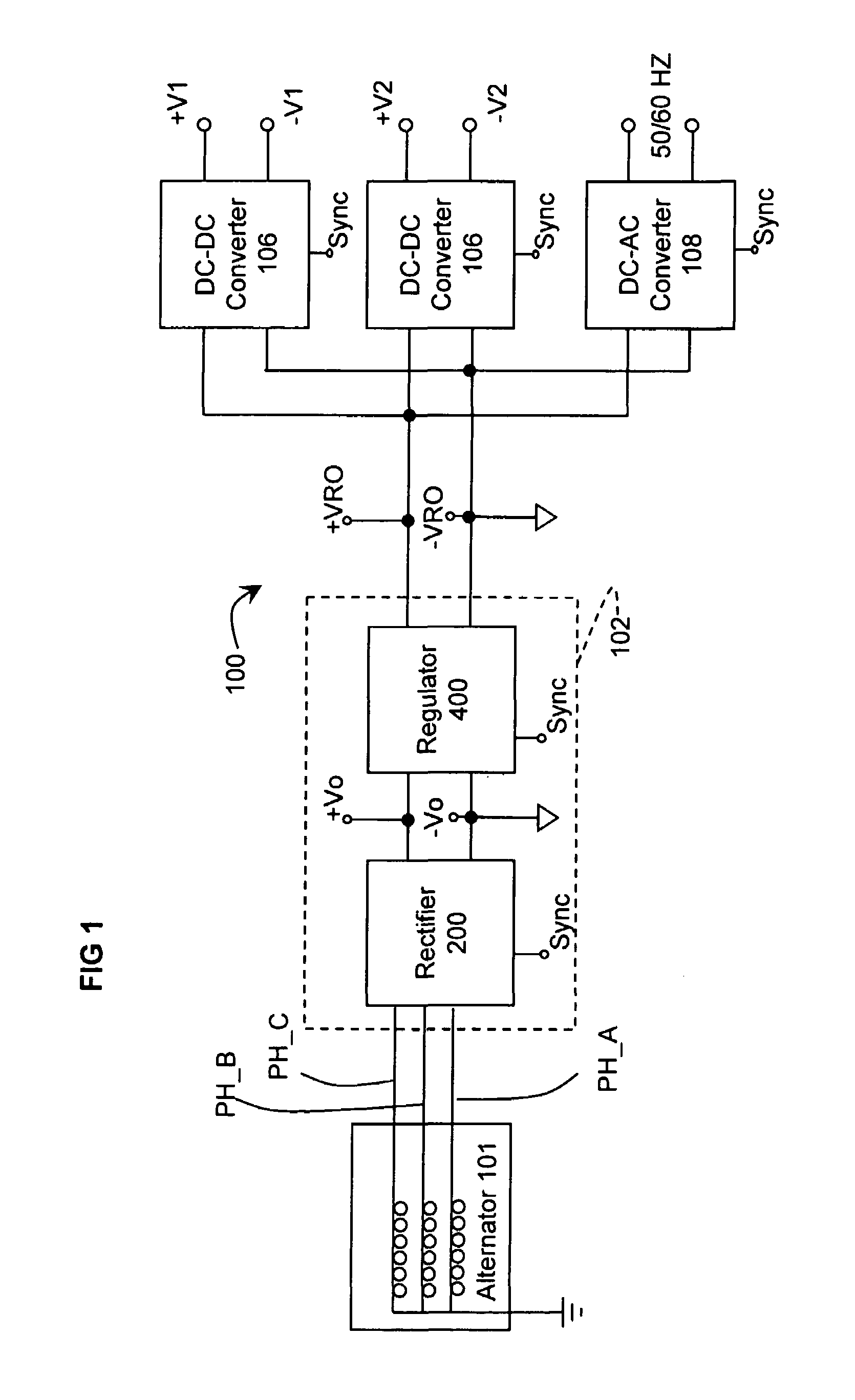Controller for permanent magnet alternator
a permanent magnet high-power, controller technology, applied in the field of machines, can solve the problems of reducing the efficiency of the alternator, so as to reduce radio frequency interference, reduce the switching energy, and increase the conversion efficiency
- Summary
- Abstract
- Description
- Claims
- Application Information
AI Technical Summary
Benefits of technology
Problems solved by technology
Method used
Image
Examples
Embodiment Construction
[0042]Referring now to FIG. 1, a system 100 for converting between mechanical and electrical energy in accordance with various aspects of the present invention comprises: an alternator 101, a rectification and regulation system 102 (suitably comprising a rectifier 200 and regulator 400), one or more DC-DC converters 106, and, suitably, a DC-AC inverter 108.
[0043]In general, alternator 101 provides multi-phase (e.g. three-phase) unregulated AC output signals, phase A (PH_A), phase B (PH_B), and phase C (PH_C) that vary significantly in accordance with drive RPM. Rectification and regulation system 102 rectifies the AC output signal from alternator 101, i.e. converts it into a DC signal (VRO), and regulates the voltage of that signal at a predetermined level, e.g. 180V, i.e., maintains the voltage level with a tolerance of ±2%. The regulated DC signal (VRO) is then applied to DC-DC converters 106 for conversion to a desired output voltage level(s) (V1, V2), e.g., 12, 24 and / or 42 volt...
PUM
 Login to View More
Login to View More Abstract
Description
Claims
Application Information
 Login to View More
Login to View More - R&D
- Intellectual Property
- Life Sciences
- Materials
- Tech Scout
- Unparalleled Data Quality
- Higher Quality Content
- 60% Fewer Hallucinations
Browse by: Latest US Patents, China's latest patents, Technical Efficacy Thesaurus, Application Domain, Technology Topic, Popular Technical Reports.
© 2025 PatSnap. All rights reserved.Legal|Privacy policy|Modern Slavery Act Transparency Statement|Sitemap|About US| Contact US: help@patsnap.com



